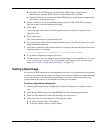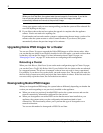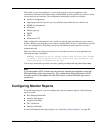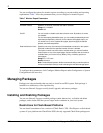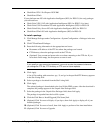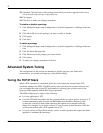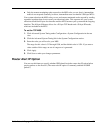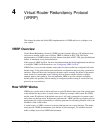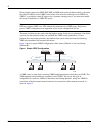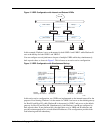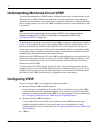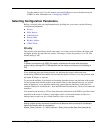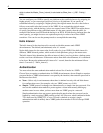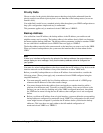
Nokia Network Voyager for IPSO 4.0 Reference Guide 183
4 Virtual Router Redundancy Protocol
(VRRP)
This chapter describes the Nokia IPSO implementation of VRRP and how to configure it on
your system.
VRRP Overview
Virtual Router Redundancy Protocol (VRRP) provides dynamic failover of IP addresses from
one router to another in the event of failure. VRRP is defined in RFC 3768. The Nokia
implementation of VRRP includes all of the features described in RFC 3768, plus the additional
feature of monitored circuit, described below.
Nokia supports VRRP for IPv6. For more information about the Nokia implementation and how
to configure VRRP for IPv6 interfaces, see “Configuring VRRP for IPv6.”
VRRP allows you to provide alternate router paths for end hosts that are configured with static
default routes. Using static default routes minimizes configuration and processing overhead on
end hosts. When end hosts are configured with static routes, normally the failure of the master
router results in a catastrophic event, isolating all hosts that are unable to detect available
alternate paths to their gateway. You can implement VRRP to provide a higher availability
default path to the gateway without needing to configure dynamic routing or router discovery
protocols on every end host.
How VRRP Works
VRRP uses a virtual router to allow end hosts to use an IP address that is part of the virtual router
as the default first-hop router. A virtual router is defined as a unique virtual router ID (VRID)
and the router IP addresses of the default route on a LAN, and is comprised of a master router
and at least one backup router. If the master platform fails, VRRP specifies an election protocol
that dynamically assigns responsibility to a backup platform for forwarding IP traffic sent to the
IP address of the virtual router.
A virtual router, or VRID, consists of a master platform and one or more backups. The master
sends periodic VRRP advertisements (also known as hello messages). To minimize network
traffic, backups do not send VRRP advertisements.



